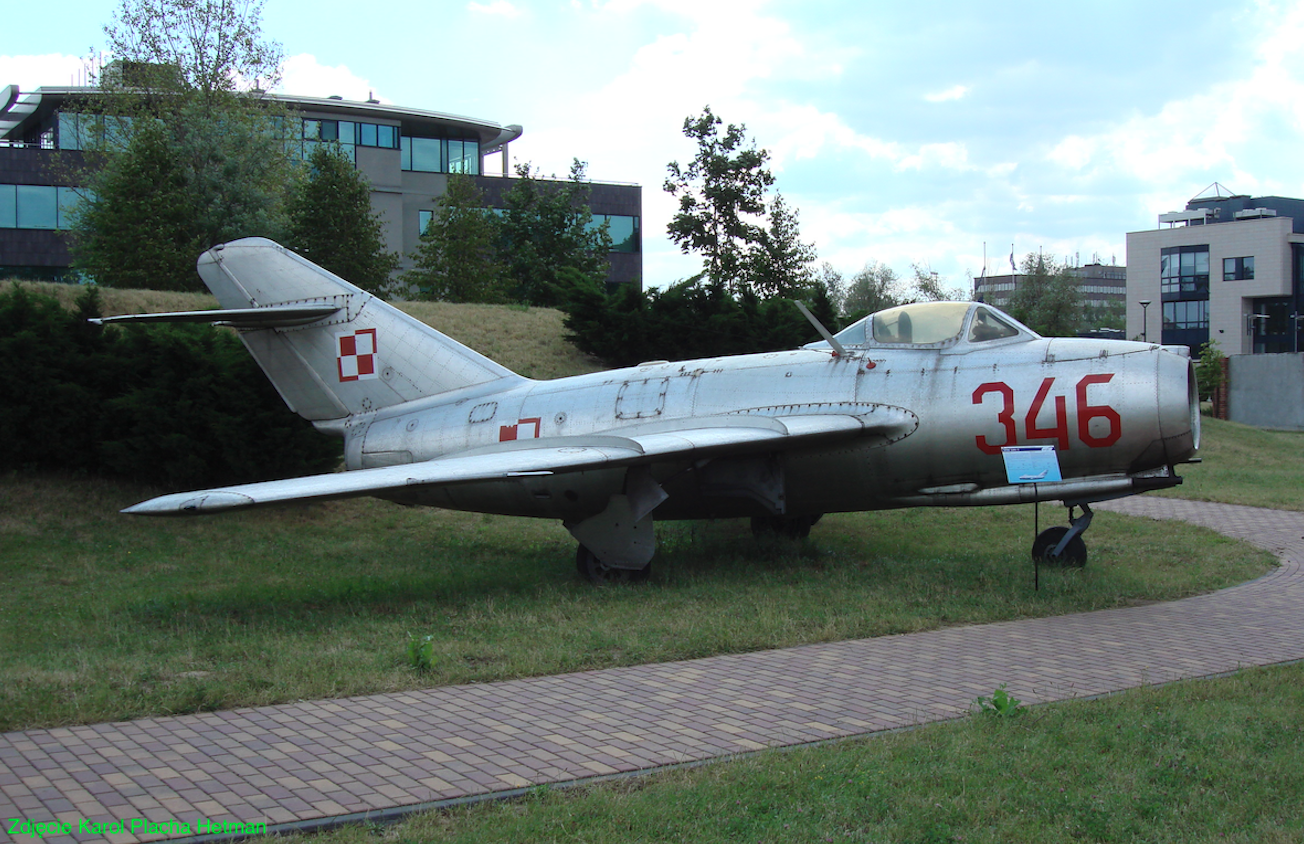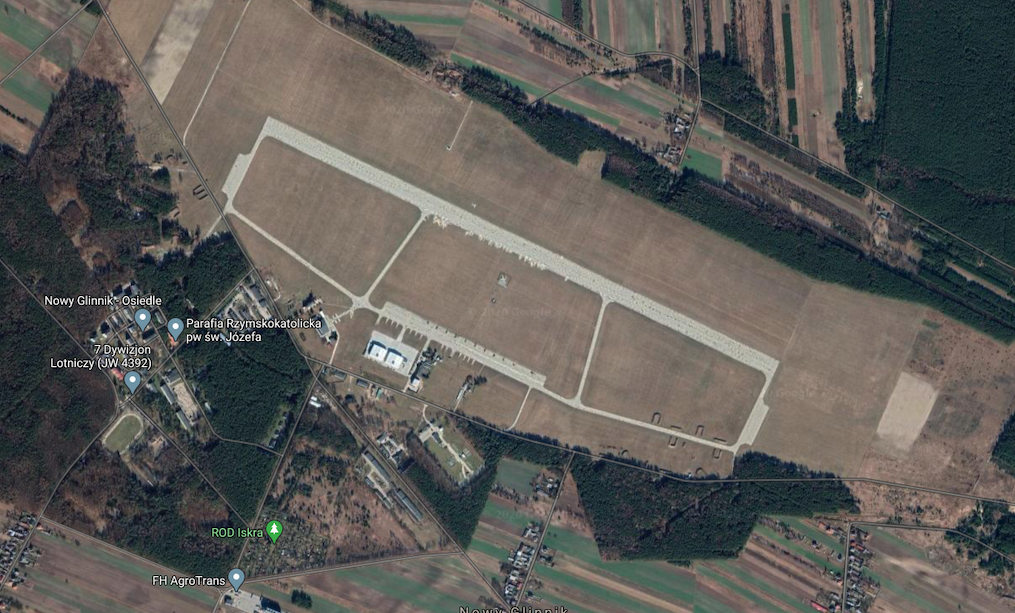Kraków 2011-12-29
63 Training-Combat Aviation Regiment
1958 year.
History


In 1958, a new stage of reorganization of aviation education in Poland began. New, modern equipment required a different, well-developed supply and security system. Under the new assumptions, the cadet during the 3-year training was to obtain a larger raid than before. Pilot fetuses should leave the university walls with a combined coating of 215 hours; 115 hours on school aircraft and 100 hours on a combat aircraft.
Therefore, it was decided based on the existing School Squadrons (in two schools in Dęblin and Radom) to create Aviation School Regiments. That is why the Order of the Minister of National Defense No. 075 / org was published. Released on December 31, 1957. The order ordered, until 15.03.1958, the establishment of Airborne Regiment School and Training and Combat Registers on the basis of squadrons. And yes,
As part of the School in Dęblin (named after Janek Krasicki);
58 Air Training and Combat Regiment in Dęblin, major pilot Piotr Rojek, aircraft; MiG-15, UTIMiG-15, Lim-1, CS-102. 59 Air Training and Combat Regiment in Biała Podlaska, commander major pilot Edward Sochaj, planes; MiG-15, UTIMiG-15, Lim-1, CS-102. 52 Air School Regiment in Radzyń Podlaski, major pilot commander Stefan Czarnecki, aircraft TS-8 Bies, Jak-11. 23 School Squadron of Navigators in Dęblin, major pilot Grzegorz Winter. 24 School Squadron of Reserve Pilots in Ułęż, commander captain pilot Ryszard Mierzwiński. 25 School Squadron in Podlodzie-Krzewica, commander captain pilot Stanisław Piekara.
As part of the school in Radom (named after Żwirka and Wigura) established;
60 Air Training and Combat Regiment in Radom, major pilot commander Feliks Skrzeczkowski, airplanes; MiG-15, UTIMiG-15, Lim-1, CS-102. 61th Air Training and Combat Regiment in Nowe Miasto nad Pilica, major commander Józef Kowalski, airplanes; MiG-15, UTIMiG-15, Lim-1, CS-102. 63 Air Training and Combat Regiment in Tomaszów Mazowiecki, commander major pilot Kazimierz Ciepiela, MiG-15, UTIMiG-15, Yak-11 aircraft. 64th Air School Regiment in Przasnysz, commander major pilot Bolesław Andrychowski, aircraft TS-8 Bies, Jak-11.
63th Air Force Training and Combat.
Each of the newly formed regiments consisted of two squadrons, in accordance with 20/452. There were to be 40 pilot-instructors, 40 MiG-15 machines, 18 UTIMiG-15 aircraft and 10 TS-8 Bies aircraft in the aviation training and combat regiment, the production of which was just launched. At the moment, Junak-3 and Jak-11 aircraft were used for training.
The 63rd Air Training and Combat Regiment in Tomaszów Mazowiecki was formed on the basis of the 3rd Combat Pilot Squadron in Tomaszów Mazowiecki and the 6th Transition Pilotage Squadron also in Tomaszów Mazowiecki. These squadrons were subject to the School in Radom. Major pilot Kazimierz Ciepiela became the commander of the new Regiment.
At the end of 1957, the fourth and final case of a Polish military pilot escaping to the West using a MiG-15 combat aircraft. The first was Lt. pilot Franciszek Jarecki (1953, 28 PLM Słupsk MiG-15 bis No. 3046/346), the second was Lt. Pilot Zdzisław Jaźwiński (1953, 41 PLM Malbork MiG-15 bis), the third was Lt. Pilot Zygmunt Gościniak (1956 , 26 PLM Zegrze Pomorskie Lim-2 No. 1B 013-027 / 1327), the last was pilot Lt. Bogdan Kożuchowski (November 7, 1957, 31 PLM Łask Lim-2 nb 1B 019-019 / 1919).
There is no place here for details of escapes and their consequences. Nevertheless, I must stress that colleagues and families remaining in the country have suffered the most. Because the communists were powerless towards fugitives (whom they sentenced in absentia to death), they survived on superiors, subordinates, colleagues and families. The effects of decisions taken in the Ministry of National Defense were far-reaching. There were times when they touched people who were not involved in the whole matter at all.
The last escape from 31 PLM Graces caused a change in the tasks set for the unit. The 31st Fighter Aviation Regiment was transformed into the 31st Combat Aviation Regiment. Therefore, on May 22, 1958, the DWL and OPL OK orders appeared. No. 07 / org on the basis of which the 63th Airborne Training and Combat Regiment in Tomaszów Mazowiecki was dismantled.
Undoubtedly, the 63rd Airborne Training and Combat Regiment was the shortest operating unit in the history of Polish Aviation.
Written by Karol Placha Hetman
